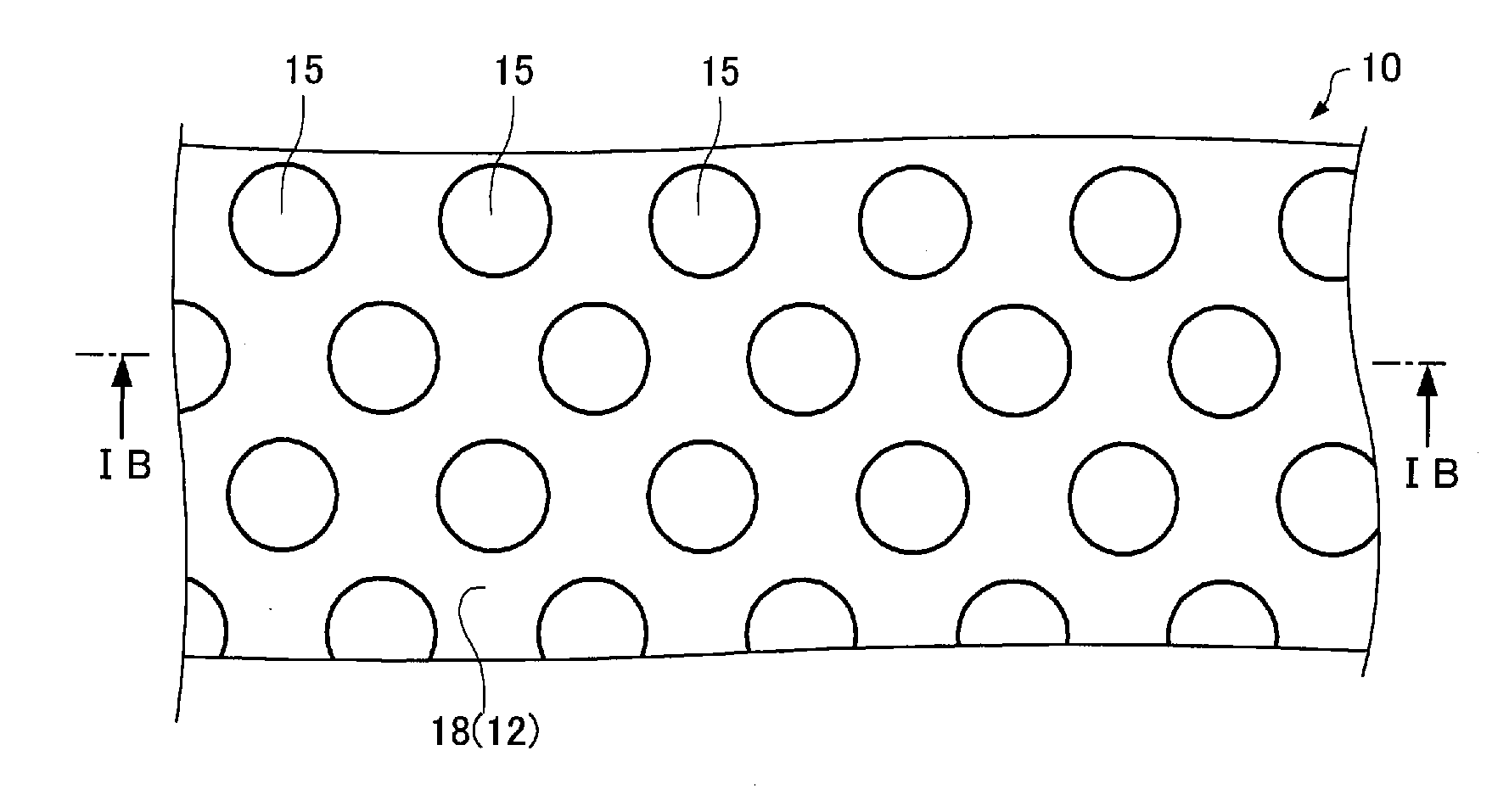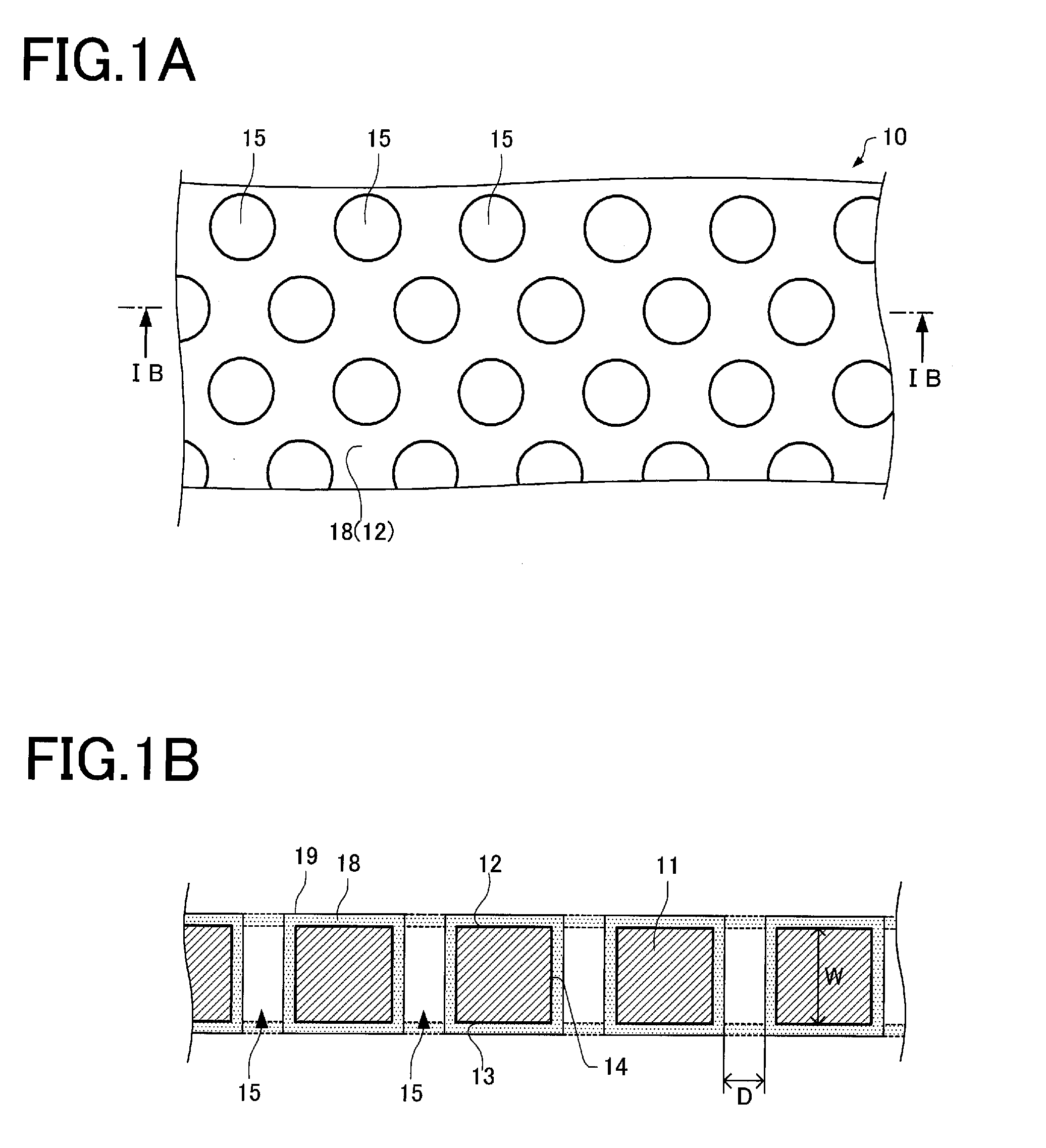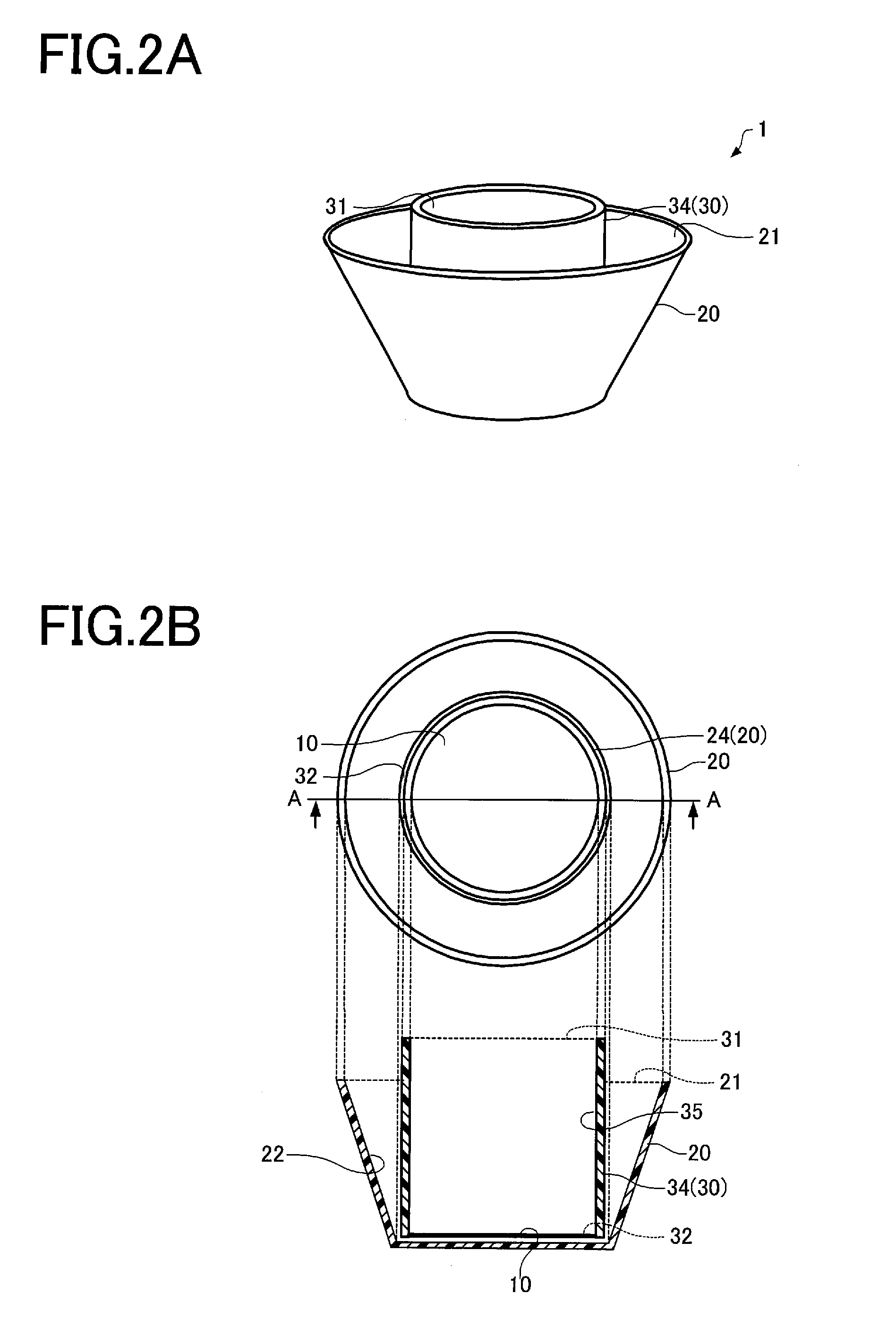Separator
a separation device and filter technology, applied in the field of separation devices, can solve the problems of low separation efficiency, contamination risk, cellular damage, etc., and achieve the effects of suppressing cell adhesion, suppressing filter blockage, and high adhesion
- Summary
- Abstract
- Description
- Claims
- Application Information
AI Technical Summary
Benefits of technology
Problems solved by technology
Method used
Image
Examples
example 1
[0088]Au was deposited on the surface of an Si substrate to form an Au film (thickness: 300 nm). A self-assembled monolayer (SAM) was formed on the Au film (SAM treatment). More specifically, the surface of the substrate was UV-cleaned (nm, W×5 min), and the substrate was immersed for 4 hours in a solution prepared by dissolving (diluting) an alkanethiol compound having a polyethylene glycol chain (PEG thiol) in (with) ethanol (0.1%). The substrate was washed with ethanol, and then washed with purified water. The PEG chain length of the PEG thiol compound was 3 (SAM treatment condition 1). The surface of the substrate obtained by the PEG thiol treatment had a contact angle with water of about 39° (i.e., hydrophilic). Note that the contact angle with water was determined by measuring the contact angle of the substrate with purified water using a contact angle meter (“CA-W” manufactured by Kyowa Interface Science Co., Ltd.).
[0089]10 ml of peripheral blood was 2-fold diluted with a pho...
example 2
[0092]In Example 2, the PEG chain length of the PEG thiol compound was changed to 5 (SAM treatment condition 2). The surface of the substrate obtained by the PEG thiol treatment had a contact angle with water of about 37° (i.e., hydrophilic). The substrate was prepared in the same manner as in Example 1, except that the PEG chain length and the contact angle of the surface were changed as described above.
example 3
[0093]In Example 3, the PEG chain length of the PEG thiol compound was changed to 6 (SAM treatment condition 3). The surface of the substrate obtained by the PEG thiol treatment had a contact angle with water of about 36° (i.e., hydrophilic). The substrate was prepared in the same manner as in Example 1, except that the PEG chain length and the contact angle of the surface were changed as described above.
PUM
| Property | Measurement | Unit |
|---|---|---|
| contact angle | aaaaa | aaaaa |
| thickness | aaaaa | aaaaa |
| thickness | aaaaa | aaaaa |
Abstract
Description
Claims
Application Information
 Login to View More
Login to View More - R&D
- Intellectual Property
- Life Sciences
- Materials
- Tech Scout
- Unparalleled Data Quality
- Higher Quality Content
- 60% Fewer Hallucinations
Browse by: Latest US Patents, China's latest patents, Technical Efficacy Thesaurus, Application Domain, Technology Topic, Popular Technical Reports.
© 2025 PatSnap. All rights reserved.Legal|Privacy policy|Modern Slavery Act Transparency Statement|Sitemap|About US| Contact US: help@patsnap.com



